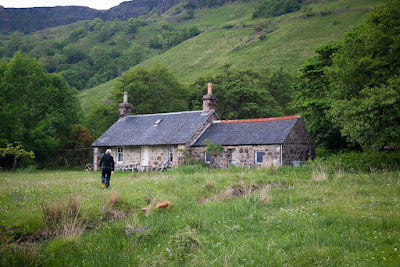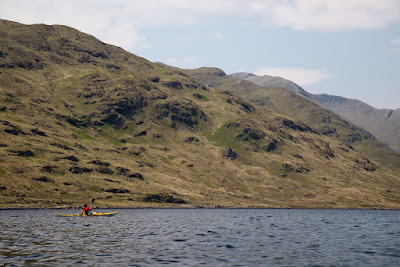The in going tide carried us through to Loch Aline at 7km/hr.
You need to be careful to keep out of the way of shipping in this very narrow and tidal channel. The Mull ferry, MV Loch Fyne passes through it nearly 30 times per day on her way to her slipway, which is inside the channel. MV Loch Fyne was built by Fergusons' of Port Glasgow in 1991. She is 54.2m long and can carry 36 cars. She originally served on the Kyle of Loch Alsh crossing to Skye but was moved to here after the Skye bridge was built in 1995.
Loch Aline is a beautiful loch with wooded shores but it has a hidden surprise. It is the site of an underground silica sand mine. It operated from WW2 until 2008 when it closed. The extracted silica is very pure and was loaded directly to ships. It was exported for the manufacture of optical glass.
We decided to land just inside the loch past the ferry jetty and the pier.
But we were rather hungry. We were suffering from anaemia after the morning's midge attack. So we stopped at the excellent snack bar for freshly made bacon and egg sandwiches. Yum!
The Sound of Mull is very popular with divers and the Lochaline Dive Centre, just up the hill from the pier, offers accommodation, showers and a cafe with WiFi access. There is also a village shop and petrol station.
At the edge of the village, overlooking the Sound of Mull, you will find the Lochaline Hotel. It has a bar, which can be conveniently accessed from this little beach. Sadly it was still early in the day and the bar had not yet opened, so readers will need to wait for a review of its facilities after a subsequent visit by the thirsty staff of seakayakphoto.com.



















































